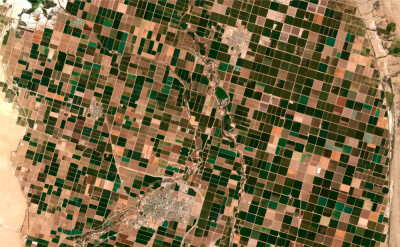Every week here at Geo Week News, we have been highlighting some of our favorite stories from around the internet that cover the geospatial, 3D, and AEC industries. Whether it’s a fascinating case study, insights from an industry thought leader, or deep dives into new tools, there is never any shortage of great writing and storytelling in this industry. Now, we’re expanding this section a bit. We will still be highlighting three stories from around the internet every week, but in addition, we will also be adding some information about some of the news that came through the industry over the last week.
So, below you will first see links to three stories that we loved this week, and then under that, check out some of the biggest news that came across the wire over the last seven days.
Stories of the Week
The word “quantum” is quickly becoming the next buzzword for the tech industry, with quantum computing specifically attracting a lot of investment and attention. In the geospatial world, there is some percolating around the idea of “quantum sensing,” which could theoretically be a major game-changer for the geospatial industry. For xyHt, Gavin Schrock recently wrote more about this emerging space, what exactly it is, and what it could mean for the industry.
Over the last couple of years, it has seemed like there has been a big push in the surveying community toward ground-penetrating radar, or GPR. This technology isn’t really new, but it’s quickly improving, and surveyors are starting to see this kind of subsurface mapping as a way to diversify their offerings. This article from Rodolfo Cabello talks about the importance of this technology for infrastructure work.
In the 1990’s, Switzerland began the process of digitizing the property cadastre throughout the nation. That data has proven to be extremely valuable for the national government system, and as Juerg Luethy writes, today that data is an “essential pillar” of their national spatial data infrastructure and can play a big role in the future digital transformation in the country.
News of the Week
One of the most important stories we’ve been tracking for the geospatial industry here in the U.S. over the last year-plus has been the modernization of the National Spatial Reference System – you can read a full report on that work we put together – and this week we got a big update. The National Geodetic Survey (NGS) released four groups of products to their beta website for review and feedback. This work, when finished, will transform the ability for geodetic work to be done, and some believe it is the key to unlocking true digital transformation for major infrastructure projects.
With Hexagon Live taking place last week, it’s no surprise that we got a few news stories from the company over the last week. In one, we got a follow-up on their spin-off company that was announced last year. While it still needs official approval from relevant stakeholders like shareholders and regulatory bodies, the new company – which will be known as Octave – is going to be a “pureplay software and SaaS company” that will address the entire lifecycle of an asset.
Sticking with Hexagon news, they also announced a new collaboration with NVIDIA, connecting their Hexagon Digital Reality (better known as HxDR) with NVIDIA’s Omniverse. As the digital twin market continues to grow, it is likely that the winning solutions is going to combine expertise from multiple parties, as this is complex technology involving a number of different tools and sectors. This is a key example of this kind of collaboration, with Hexagon’s ability to collect and process reality data, and Omniverse’s ability to create photorealism and run simulations.
Speaking of collaborations and digital twins, last week also saw an announcement from the Digital Twin Consortium and the ASPRS around a new agreement. As part of this new collaboration, they say they will work on “realizing interoperability by harmonizing technology components and other elements” and “aligning work in DTC Capabilities and Technology for adoption within vertical domains through proof of value projects and use cases.”






